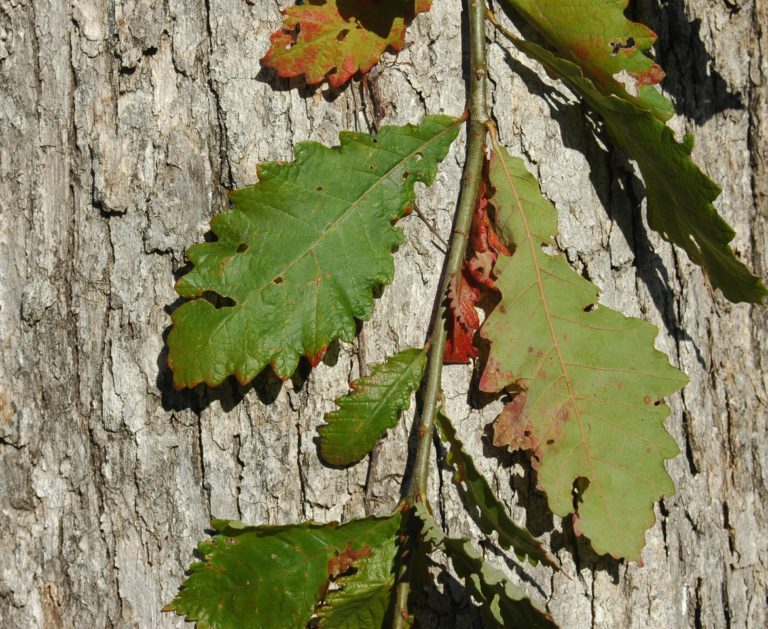Swamp Chestnut oak is a tall tightly crowned oak with a very large trunk. The common name of the chestnut oak comes from the resemblance of the leaves to those of a chestnut. Generally growing between fifty and one hundred feet tall, the Swamp Chestnut Oak has been know to reach heights of up to one hundred and fifty feet. The bark of mature trees is a distinctive light grey and deeply ridged. The leaves of the Swamp Chestnut Oak turn bright yellow to scarlet in the fall. Alternately know as the Basket Oak historically the fibers in this oak were used to make baskets used in the cotton industry. The acorns of the Swamp Chestnut Oak are sweet and can be eaten raw. The acorns are an important winter food source for birds, squirrels, deer and cows which have lead some to call it the Cow oak.
NURSERY HOURS
Wednesday: 10-4 Thursday: 10-6 Friday-Saturday: 10-4 Sunday: 12-4
Quercus michauxii

Key Info
Scientific Name: Quercus michauxii Nutt.
Common Names: Swamp Chestnut Oak, Basket Oak, Cow Oak, Chestnut Oak, Michaux Oak
Family Names: Fagaceae
Plant Type: Tree / Shrub
Leaf Retention: Deciduous
Flower Color: Yellow/Green & Red/Burgundy
Additional Info
Habit: tall slow to mediumgrowing tree with tight crown close to top of tree
Height: 100' or more
Spread: 40' to 60'
Soil Conditions: moist, well-drained, acidic sandy to silty clay loams. It tolerates wet soils and occasional flooding.
Leaves: Shiny elliptical leaves are unlobed and have rounded serration along edge, yellow and red fall color
Flowers (or reproductive structures: Male pollen flowers in slender yellow-green catkins to 2"-4" long and female flowers in very short few-flowered reddish spikes. Both grow on the same tree (monoecious).
Fruit: Acorns are 1 to 1.5 inches long, sessile, and are usually produced singly or in clusters of 2 or 3. 1/3 to 1/2 of acorn is covered by a hairy, grey to brown scaly cup. These acorns are sweet-tasting and can be eaten from the tree unlike other acorns. Acorns are typically not produced until the tree reaches 20-25 years old. In North Carolina, the acorns are available from September to October.
Natural Distribution: stream banks, moist woods, well drained floodplains, bottom land forests, swamps
USDA Hardiness Zone: 4 to 9
USDA Wetland Indicator Status in NC: FAC
Pollination: wind
Wildlife Connections: Wildlife Cover/Habitat, Wildlife Food Source, Wildlife Larval Host, Wildlife Nesting! Provides habitat for birds and small animals, many birds and mammals eat the acorns, attracts insectivorous birds, larval host for both 'White hairstreak', 'Northern Hairstreak', and 'Horaces Duskywing'
Propagation: nuts
